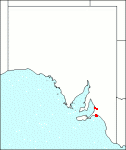Family: Onagraceae
Oenothera affinis
Citation:
Cambes. in A. St. Hil., Fl. Brasil. merid. 2:269 (1830).
Synonymy: Oenothera longiflora Common name: Long-flowered evening-primrose.
Description:
Herbs with 1 to several branches, to 100 cm high, from a basal rosette, but basal leaves have dried up by the time the plant flowers, densely covered with fine long as well as short hairs; leaves sessile, linear-lanceolate to narrowly elliptic, 4-12 x 0.4-1.5 cm, with a cuneate base, acute, with widely spaced teeth or serrations, densely covered with mainly short hairs and with longer ones along the main veins and the margin.
Inflorescence with sessile flowers borne singly in the axils of leaf-like bracts; floral tube 8-9 cm long, cylindrical and only slightly broadened below the calyx; sepals narrowly lanceolate, 25-30 mm long, incompletely separating and bent to one side, densely covered with fine long and short hairs outside; petals broadly obovate, 35-40 mm long, truncate to slightly emarginate, yellow fading to reddish; stamens with filaments slightly broadened towards the base; anthers dorsifixed, and T-shaped, 12-13 mm long; ovary inferior, more or less cylindrical; stigma with 4 slender lobes 3-4 mm long.
Capsule 2-3 cm long, without wings but slightly broadened towards the apex.
|
|
Distribution:
|
S.Aust.: SL. N.S.W. Native of temperate South America.
|
Conservation status:
naturalised
Flowering time: Nov. — Feb.
|

SA Distribution Map based
on current data relating to
specimens held in the
State Herbarium of South Australia
|
Biology:
No text
Taxonomic notes:
The very similar species, O. longiflora L., which has been recorded from other parts of Australia is distinguished by the truncate bases of its cauline leaves and the hairs not being silky and only short. P. H. Raven (1968), Flora Europaea 2:308, was undecided whether he should follow Tandon & Hecht (1956), Cytologia 21:52, by including O. affinis under O. mollissima L.
Author:
Not yet available
|

